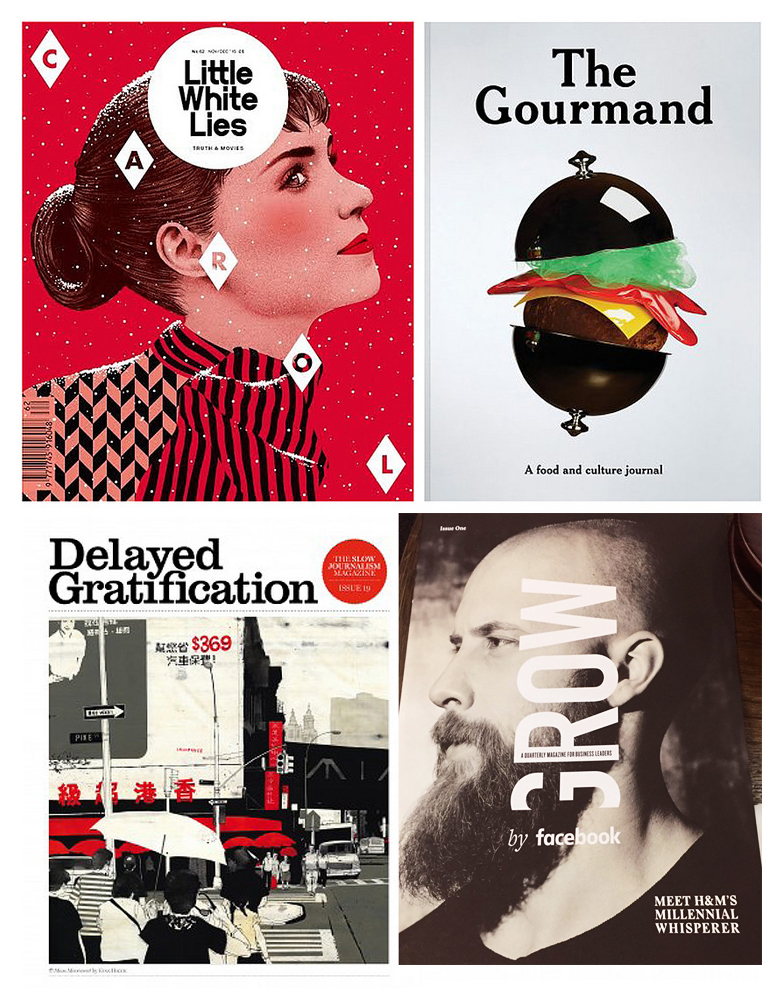 They’re smart, they’re cool … and they’re in print. But just how did indie magazines become such hot publishing properties?
They’re smart, they’re cool … and they’re in print. But just how did indie magazines become such hot publishing properties?
“It started as a rebellious trend: a stylish stand against the march of technology and the fast pace of the digital age,” writes Vanessa Thorpe in The Guardian. “But now the vast range of independent magazines on offer in Britain is being hailed as a modern publishing phenomenon.”
As Thorpe explains, this “smart new breed of print titles” is growing in popularity, more than tripling in the UK magazine market since 2013. We’ve highlighted some of these titles before, and the phenomenon isn’t limited to the UK. The global market for indie magazines remains strong, and publishers are happy to provide.
Last year we predicted a whole lot of love for indies in the future, and that is indeed panning out.
“Even Facebook, the ostensible enemy of print, has just entered the crowded marketplace with the launch of its new title, Grow, ‘a quarterly magazine for business leaders’ that appeared in business-class airport lounges last month,” Thorpe writes.
Part of the appeal is undoubtedly the high quality and editorial standards of the titles, explained Claire Catterall, co-curator of indie print exhibition Print! Tearing It Up.
“It is the sheer quantity and quality that is astonishing,” said Catterall.
The idea of indie publishing fits right into with the growing gig economy, as a younger generation of professionals embraces a self-styled career model that includes side hustles, freelancing and consultant-style positions, instead of the typical 9-5. This provides a perfect breeding ground for indies, and makes some of these launches possible on the kind of shoe-string budget that would swamp larger titles.
Thorpe mentions titles like Gourmand; Gentlewoman, one of several niche titles breaking the mold in men’s and women’s magazines; and some of the beautiful indie travel titles that are finding passionate audiences. Those audiences are being found directly, and through indie discovery platforms like Stack.
“Or they might be bought at a dedicated store, like Magazine in Brighton,” Thorpe continues. “This now sells three times as many titles than it did when it opened just three years ago.”
There are several factors at play here as the mass market continues to swing toward niche. First, it’s the quality factor, both the tactile gorgeousness, and the editorial standards that are possible when writing for a tightly defined passion-based niche.
“Like the flip in vinyl record sales, this indie magazine glut speaks of internet fatigue – despite the fact it is technological developments that have made small-scale publishing possible. And, since many readers of these niche titles are young, the boom must be fed by a feel for the exotic nature of print, rather than by nostalgia,” Thorpe continues.
You can’t curl up with a good screen, and this is the kind of experience we long to have – personally relevant and physically enjoyable, editorially significant and graphically beautifully. Indies are giving us what we want, and as long as they do that we can expect them to continue to thrive.
